Interesting Facts About Genet
Evelyn StarA common genet is a beast, looking at the photo of which, you do not immediately understand what he looks like: either a cat or a ferret. What kind of animal is a common genet? The first mention of a common genet was made two and a half thousand years ago by the ancient Greek historian Herodotus, who immortalized it in his works. However, the genets were not then something strange and were actively used by the Greeks to combat rodents. They were later used by the Moors for the same purpose.
Description of genets
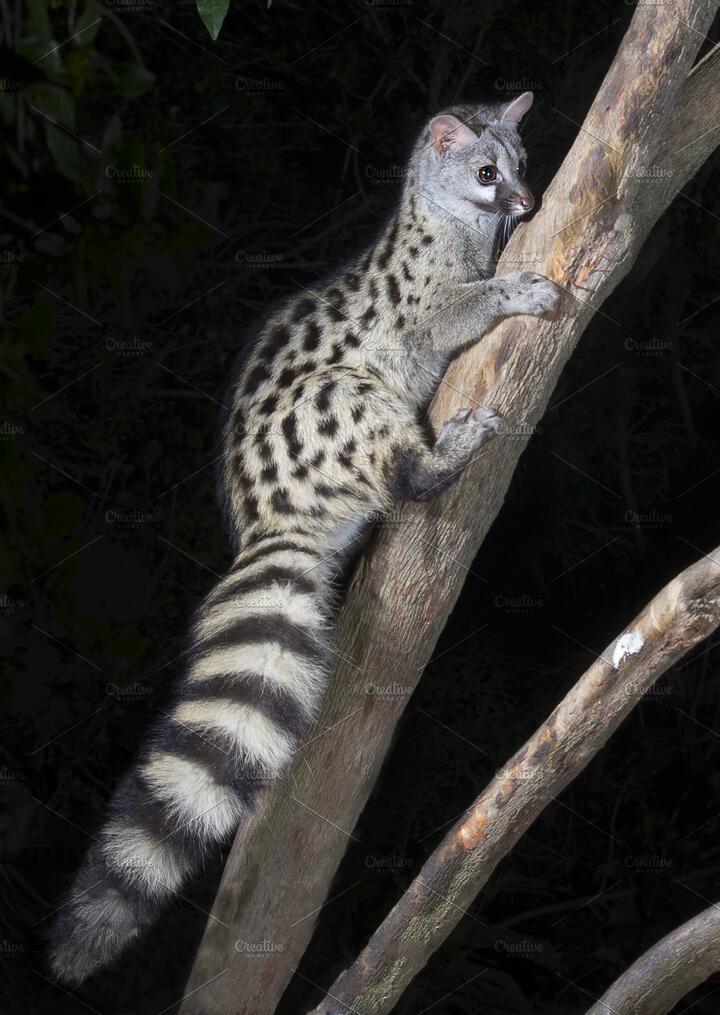 Photo by Photonature on creativemarket
Photo by Photonature on creativemarketAlthough the first mention of genets dates back to the Herodotus era, the first scientific description of this animal was given only in 1758 by Carl Linnaeus. The science suggests that the genet is one of the most ancient and primitive predatory animals that have survived to this day. It should be noted that over the past forty to fifty million years, their appearance has undergone virtually no change.
A common genet is a small animal that can be thought of as a slightly strange cat. The body of the genet is slender and has an elongated shape, which is why some mistakenly confuse them with the Kunya family. The head is small and wide at the back. The muzzle is pointy and long, which further enhances the resemblance to the marten. The animal’s ears are wide, large with rounded ends. Its eyes are big and similar to cats, which also confuses non-professionals. At the same time, in the daytime, the pupil of the eye, like cats, looks like a vertical narrow gap. The number of teeth is forty.
The anal glands of a common genet are small and therefore unable to secrete a significant amount of musk-smelling fluid. The genet’s claws are short and can be retracted into the pads like a cat’s claws, but only half of their length. The limbs are short and the hindquarters are noticeably longer than the front ones. All paws have the same number of fingers – five each. The wool cover is thick, dense, and short. If you touch it to the touch, you will notice that it is very smooth and delicate. The tail is fluffy and long. The length of the tail is only slightly inferior to the length of the body with the head. Females have four nipples, and males have a very developed baculum.
The color of genets
The basic color of the wool cover of a common genet is light gray. Some places have a brownish or yellowish tint. There are black spots of various shapes and sizes on the upper extremities, sides, back of the neck and back. And on the back surface of the neck, they are located in vertical rows, while on the sides, back and upper limbs – horizontal. Along the spine stretches a continuous sulfuric strip of small width. The throat and chest are lighter, while the muzzle is darker in grey. The lower jaw is painted completely black. The area of wool under the eyes is completely white, followed by a wide black stripe. The cushions on which the vibrissae are placed are white. The nose mirror is black and brown. The extremities are darker than the rest of the body. The hind limbs are especially dark, but the paws are painted in light grey. The tail is decorated with six or seven black and white rings, which are about the same width. The tip of the tail is black.
Genet Size
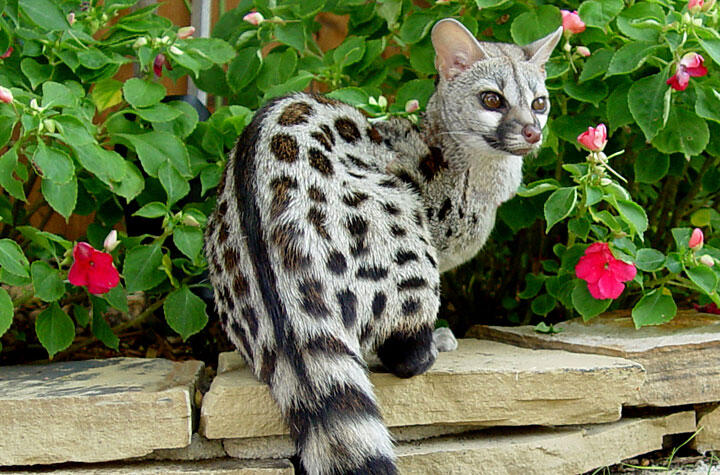 Photo from www.elelur.com
Photo from www.elelur.comAn adult of a common genet has between forty-two and fifty-eight centimeters in length. The length of the tail is from thirty-nine to fifty-three centimeters. The height (shoulder height) is from fifteen to seventeen centimeters.
Weight of a genet
The weight of the animal does not exceed two kilos and on average varies between one and two kilos.
Genet life expectancy
In its natural habitat, a common genet tends to live for eight to ten years. In captivity, it is much longer – up to fifteen years, although there is unconfirmed evidence that the genet at home can live more than thirty years, which raises known doubts in scientific circles.
The voice of genets
It’s a simple genet of a way to make sounds like cats: if they’re good, they meow, when threatened, they start to hiss and when excited, they rumble.
Distribution of genet
This species is quite widespread on the African continent. Also, the genet can be found in the southwestern part of the Arabian Peninsula. In very distant times, genets were introduced into the Iberian Peninsula, thus giving birth to a European population of these animals, which consists of only one species. A common genet is one of the three members of the Weaver family, which are represented in the Old World.
Nowadays, common genet can be found in the following states: Palestine, Mozambique, Lesotho, Namibia, South Africa, Botswana, Angola, Mauritania, Senegal, Guinea, Gambia, Burkina Faso, Mali, Côte d’Ivoire, Togo, Ghana, Benin, Nigeria, Niger, Cameroon, Chad, Zambia, Zimbabwe, Central African Republic, Tanzania, Kenya, Uganda, Yemen, Saudi Arabia, Oman, South Sudan, Somalia, Djibouti, Eritrea, Ethiopia, Sudan, Egypt, Libya, Tunisia, Morocco, Algeria, Portugal, France (Southern regions), Spain.
It should be noted that the habitat of a common genet on Palestinian territory is considered controversial among zoological scientists.
Habitat of genet
A common genet lives almost anywhere where it can find the right food. In most cases, they prefer forest and bushland areas close to water. Also, they often settle in fields, in mountainous areas (both wooded and tree-less) up to three thousand meters high, on plains in grassy thickets and on stony cliffs. From time to time, they can be found near agricultural land and near villages. Arid areas and wet jungles are preferred by common genets.
Meals for genets
Common genets are fed by small mammals (no bigger than hares), reptiles, insects, bird eggs, and birds. Scavengers, berries, and fish are the least commonly eaten genet. Sometimes they ruin pigeons and hen houses. The main food of genets is rodents.
Genet behavior
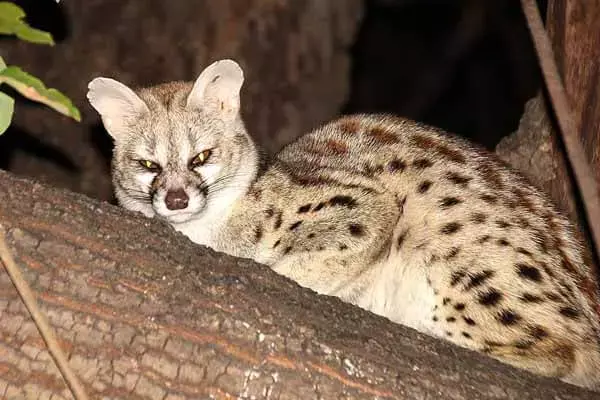
A common genet is a clever and fast animal that leads to nightlife. They are very fast runners, have the outstanding jumping ability, being able to jump up to two meters in length. They are also excellent top climbers and in the art of climbing trees, they are as good as or even superior to cats. They can climb even through spiked branches, slip between rocks, and are good swimmers.
Animal genets are cautious and even shy. It is difficult to meet them not only during the day when they prefer to rest in hiding but also at night. Daytime shelter for genets can be cavities, burrows of daytime animals, scattered rocks, and similar places. The genets don’t go out in search of prey until after sunset.
If the genet is frightened, it lifts the wool with a tube and releases a small amount of liquid that smells like musk. The secret that is secreted by the anal glands is mostly used by males, who use it to mark the borders of their territory.
Genets are well tamed and are fairly unpretentious pets, but need additional food supplements.
A common genet is only hunted on land. At the same time, having tracked down the prey, it silently creeps up to the victim, pulling the body and tail in one line, and then makes a sharp jump, grabbing the victim by the neck and suffocating her. When the victim is strangled, the genet immediately eats her. When it eats, the genet’s wool stands up. This may be the result of the pleasure of eating or the fear of losing its prey or being caught off guard.
The social structure of genets
Genet leads a single life. Each male has an area of approximately five square kilometers, which includes several areas belonging to females.
Genet pairs can be seen during the breeding season, but more often a group of animals can be caught. Since it is always a mother together with cubs, this does not give any reason to classify the genets as social animals.
Enemies of genets
The natural enemies of genets are caracals, leopards, servals, and big owls. Snakes, civets, and jackals are also dangerous for cubs.
Reproduction of genets
The mating process in genet lasts about five minutes, although the prelude can last about an hour. When the estrus (flow) in females runs out, they cease to be of any interest to males.
Genet breeding season
Genets reproduce twice a year, usually during the rainy season. Puberty occurs only at two years of age, and pregnancy in females lasts from ten to twelve weeks (averaging seventy to seventy-seven days).
The offspring of a genet
 Photo from www.britannica.com
Photo from www.britannica.comA common genet produces two to four deaf, blind and naked calves. On the fifth, to the eighteenth day of life, the pup’s eyes begin to open, and the ears gradually take a vertical position. The calves will be fed with mother’s milk for several months, although solid food, they will eat only a few weeks after birth. At seven to eight months of age, the offspring are already capable of independent living.
The economic importance of a genet
In several African countries, a common genet is kept in homes as a rodent fighter, thereby replacing a cat. For this purpose, they could be kept in Europe, but the strong smell of musk has led to the main role in catching mice and rats cats, and the genets are kept only as exotic pets.
Genet skins are used in the manufacture of various fur products, and meat is eaten. The internal organs of the animal are used for therapeutic purposes by local people.
It is worth noting that in addition to the benefits to humans, genets can cause some damage associated with the fact that they can destroy chicken coops and pigeons, although it should be recognized that they do it extremely rarely.
Genet population size and protection
In general, it can be noted that the population of a common genet is quite large. At present, the status of this species is referred to as “Least Concern” (according to 2008 data). This is because the species is fairly widespread throughout Africa. Animal habitats include protected areas, and the genet is well adapted to different habitats, which significantly improves its ability to survive and its human impact. Although the genet is still being hunted, it does not cause serious harm to the population. However, in several countries represented mainly by European countries, genets are threatened by the decline in local populations. This is due to the destruction of any habitat that is less or less suitable. This is due to the development of tourism and increasing urbanization.
The protected status of a genet
Subspecies such as Genetta genetta isabelae is included in the International Red Book. National legislation in some African countries such as Tunisia, Algeria, and Morocco also protects common genets, although no breeding or conservation measures have yet been developed.
Subspecies of genets
At the moment, several subspecies of this animal are distinguished by zoologists. However, disputes about them among scientists still do not subside.
1.Genetta genetta senegalensis (Spain),
2.Genetta genetta terraesanctae (Palestine),
3.Genetta genetta pyrenaica (France, Iberian Peninsula),
4.Genetta genetta isabelae (Spain),
5.Genetta genetta granti (Southwest Arabia),
6.Genetta genetta balearica (Balearic Islands, Mallorca).
Did you like interesting facts about genet? Share it with your friends.
Genet Facts – Learn About the Common Genet
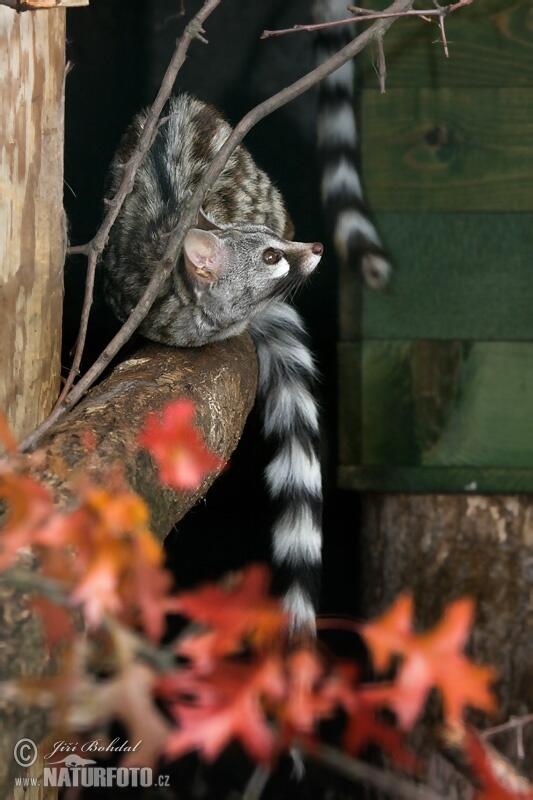 Phot by Jiri Bohdal on naturephoto
Phot by Jiri Bohdal on naturephotoThere are many fascinating genet facts, from its appearance to its genus. The genus Genetta consists of 14 to 17 species of small African carnivorans. The common genet is the only species of genet found in Europe, occurring in the Iberian Peninsula, Italy, and France. The genet’s unique habitat makes it an excellent choice for pet owners. Learn about the common genet in this article and learn how you can spot the animal in the wild.
The Genet is a carnivorous creature, although it is more accurately described as an omnivore. It mixes fruit with meat for its diet. This means that the genet will consume almost anything, from scorpions to insects to bats to birds to frogs and birds. While it’s not a good idea to try to feed a Genet everything, it is an excellent choice for pet owners who want to make sure that the pet gets a healthy diet.
The Genet is a fascinating creature, but its main role in society is conservation. The African continent has a large population of elusive species, which is the most endangered mammal. The animal is considered a threat to the environment in parts of the world, including the Congo and Ghana. However, it is also known for being an incredibly hard worker. If you have a passion for learning more about animals, the genet might be the perfect pet. You’ll be amazed by its personality and how much you’ll learn about them.
The common genet is a species that is native to Africa. It was introduced to the Mediterranean region around 1000- 1500 years ago and spread throughout Europe and southern France and Italy. It can survive in both savanna and wooded habitats, and some subspecies of the species mate during the rainy season and in spring or autumn. In the wild, the female common genet can give birth to up to five babies after 10-11 weeks of gestation. These babies must depend on their mothers’ milk for their first four months of life, but they can start receiving meat around the seventh week of gestation. After that, they are ready to start hunting for their own.
Acutely spotted genet is the only species of genet that is native to Madagascar. It is an omnivorous animal that eats insects and other creatures. It also eats fruits and vegetables. Its slender body and long tail make it a unique pet for pets. A genet is an incredible animal, but its teeth are very useful for this purpose. They can also sense the presence of plants.
Unlike a cat, genets are omnivorous. Because of their unique characteristics, they are ideal pets for many people. Their distinctive appearance, slender body, and sharp claws make them a highly attractive pets. If you’re looking for a unique pet, there are several different species of this adorable little cat. They are native to the African tropics and are commonly seen in a variety of European countries.
A genet’s tail is long, and it serves as a counterweight when it moves around. This unique trait makes them a very agile animals, able to walk, run, and climb. A genet’s iris is similar to its fur, and its eyes are large and elliptical. A genet’s eyelids and iris are a similar color to its fur. A genet can move its head to look at a moving object.
Despite its name, the Cape genet is a nocturnal carnivore that is native to southern Africa. It is ash grey in color, with brown irregular spots and black spine strips. Its tail is black and white, with a black tip. A genet’s dorsal crest is short, and its hind legs are long and spotted. It is a solitary animal.
A genet’s tail is long, and its body is long and ringed. It has a very short tail, which is useful for hunting. A genet’s long tail is used for marking territory, and it can advertise its reproductive status using its musk glands. A genet’s crest also indicates its sexual status. The name ‘genet’ may originate from an Arabic word meaning ‘bear’.
- Rodents24 Interesting Facts About Guinea Pigs

- Cats25 Interesting Facts About CatsBy Amelia B

- WildlifeInteresting And Surprising Facts About A White LionBy Evelyn Star

- WildlifeHow Is Orangutan Strength And Dangerous?By Khai Dove

- CatsAmazing Facts About Fishing CatsBy Amelia B

- RodentsHow Do Squirrels Reproduce?By Noah Young

- LivestockWhat Do Ducks Eat In A Pond?By Camilo Walker

- Wildlife50 Amazing Facts About The JaguarBy Nolan Foster
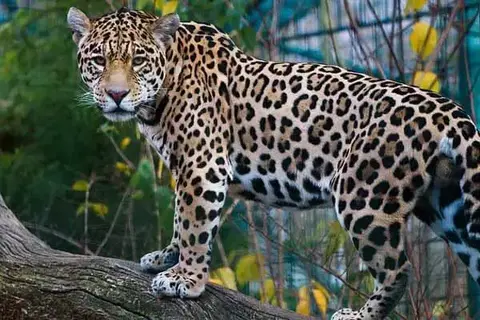
- WildlifeTypes Of Lemurs In MadagascarBy Murphy Scott

- RodentsFacts about Hedgehogs that you may not knowBy Nolan Foster
